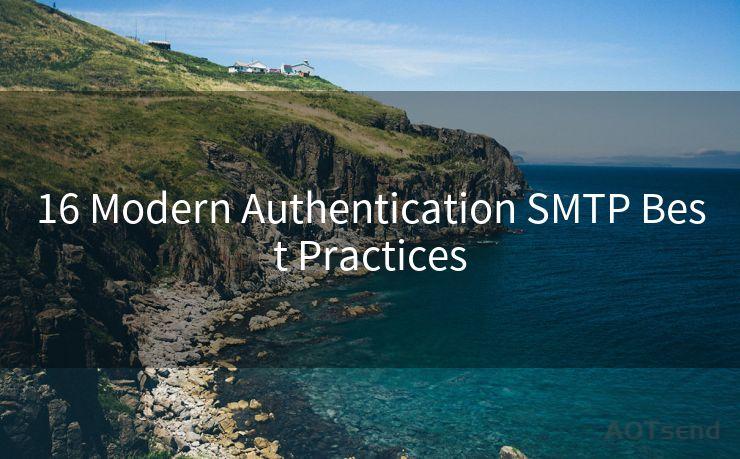16 Modern Authentication SMTP Best Practices




In the digital age, email communication remains a cornerstone of business and personal interactions. However, with the rise of cyber threats, securing these communications is paramount. This article explores 16 modern authentication SMTP best practices to enhance your email security and ensure smooth, safe communications.
1. Choose a Reliable Email Service Provider
Start by selecting a trusted email service provider with a solid reputation for security. Providers who prioritize security offer advanced authentication methods and encryption protocols.
2. Enable Two-Factor Authentication
Two-factor authentication (2FA) adds an extra layer of security to your email account. It requires not only a password but also a secondary verification method, such as a code sent to your phone.
3. Utilize Strong Passwords
Creating a complex and unique password for your email account is crucial. Avoid common phrases or patterns and update your password regularly.
4. Implement SPF Records
Sender Policy Framework (SPF) records help verify the authenticity of email senders. By specifying which servers are authorized to send emails from your domain, you reduce the risk of spoofing.
5. Use DKIM Signatures
DomainKeys Identified Mail (DKIM) signatures ensure that the content of your emails hasn't been tampered with during transit. This adds another level of trustworthiness to your communications.
6. Adopt DMARC Policy
Domain-based Message Authentication, Reporting, and Conformance (DMARC) allows you to specify how unauthenticated emails should be handled, further reducing the chances of spoofing and phishing attacks.
7. Encrypt Your Emails
Utilize encryption protocols like SSL/TLS to ensure that your emails are securely transmitted between servers. This prevents eavesdropping and data leakage.
8. Regularly Update Your Software
Keep your email client and server software up to date. Software updates often include security patches and bug fixes.
9. Beware of Phishing Attacks
Train yourself and your team to recognize phishing emails. These emails often impersonate trusted sources and attempt to steal sensitive information.
10. Limit Access to Sensitive Information
Avoid sending sensitive information via email unless it's encrypted. Consider using secure file-sharing platforms for confidential documents.
11. Monitor Suspicious Activity
🔔🔔🔔
【AOTsend Email API】:AOTsend is a Managed Email Service for sending transactional emails. Support Email Types: reminders, authentication, confirmations, notifications, verification codes, invoices, password resets, account activations, billing statements, two-factor authentication (2FA), and one-time passwords (OTP) emails, etc. $0.28 per 1000 Emails. 99% Delivery, 98% Inbox Rate.
You might be interested in:
Why did we start the AOTsend project, Brand Story?
What is a Managed Email API, How it Works?
Best 25+ Email Marketing Platforms (Authority,Keywords&Traffic Comparison)
Best 24+ Email Marketing Service (Price, Pros&Cons Comparison)
Email APIs vs SMTP: How they Works, Any Difference?
Regularly check your email account for any suspicious activity, such as unexpected login attempts or unusual email sending patterns.
12. Use Secure Connection for IMAP and POP3
If you use IMAP or POP3 to access your emails, ensure that these connections are also secured with SSL/TLS.
13. Implement Email Archiving
Email archiving helps retain important emails while ensuring they are stored securely. This can be crucial for compliance and legal purposes.
14. Backup Your Emails
Regularly backup your emails to prevent data loss in case of any technical issues or security breaches.
15. Consider End-to-End Encryption
For maximum security, consider using end-to-end encryption tools that ensure only the sender and receiver can read the email content.
16. Stay Informed About Security Threats
Keep yourself updated about the latest email security threats and best practices. This helps you stay proactive in protecting your communications.

By following these 16 modern authentication SMTP best practices, you can significantly enhance the security of your email communications. Remember, email security is not just about protecting your information; it's also about ensuring the trust and integrity of your communications.




Scan the QR code to access on your mobile device.
Copyright notice: This article is published by AotSend. Reproduction requires attribution.
Article Link:https://www.mailwot.com/p5843.html



